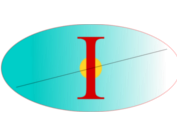Citation:

Abstract:
Engineered metallic nanoparticles, which are found in numerous applications, are usually stabilized by organic ligands influencing their interfacial properties. We found that the ligands affect tremendously the electrochemical peak oxidation potentials of the nanoparticles. In this work, identical gold nanoparticles were ligand-exchanged and carefully analyzed to enable a precise and highly reproducible comparison. The peak potential difference between gold nanoparticles stabilized by various ligands, such as 2- and 4-mercaptobenzoic acid, can be as high as 71 mV, which is substantial in energetic terms. A detailed study supported by density functional theory (DFT) calculations aimed to determine the source of this interesting effect. The DFT simulations of the ligand adsorption modes on Au surfaces were used to calculate the redox potentials through the thermodynamic cycle method. The DFT results of the peak potential shift were in good agreement with the experimental results for a few ligands, but showed some discrepancy, which was attributed to kinetic effects. The kinetic rate constant of the oxidation of Au nanoparticles stabilized by 4-mercaptobenzoic acid was found to be twice as large as that of the Au nanoparticles stabilized by citrate, as calculated from Laviron’s theory and the Tafel equation. Finally, these findings could be applied to some novel applications such as determining the distribution of nanoparticle population in a dispersion as well as monitoring the ligand exchange between nanoparticles.
Notes:
Publisher: American Chemical Society



